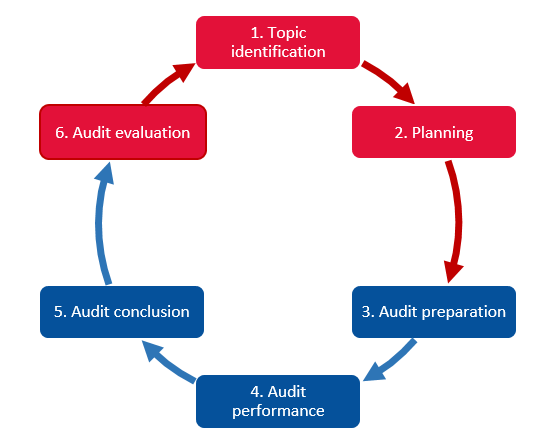Business Intelligence at the Supreme Audit Office
The regular access to information and its timely transmitting to users in the required quality is the basic condition of success of the analytical and audit activities of the Supreme Audit Office (SAO). Moreover, efficient data processing influences the fulfilment of other predefined goals, such as:
- faster risk detection with respect to uneconomical conduct,
- more efficient and effective planning and preparation of audits,
- fewer demands on auditors and auditees with respect to information processing,
- flexible publishing of outputs (for example in the “Open Data” standard).
The complex approach to the agenda which includes data processing, reporting, and publishing of specialised analytical outputs is commonly marked with the term “Business Intelligence” (BI). With the help of BI (processes, tools, methodology, ...) we give the data a special significance which turns them into information. The information is further distributed in an appropriate form to the end users.
The term BI is primarily linked to procedures and tools which are applied in the decision-making processes at the managerial level. However, the BI has a greater potential (in the area of data processing and visualisation, information presenting), and we use the BI for information support of analytical and audit activities at all stages (“BI for everyone”).

BI processes
Collection, processing and storage of external data
Main sources for our BI processes are information systems of public administration (ISPA). Furthermore, we also work with the open data of public administration and third parties in addition to supportive data from other external sources (registers, etc.).
Due to the huge amount of the systems (there are more than 7 000 ISPA in evidence in the CR), and their great heterogeneous nature, it is always important to choose carefully the suitable data for further processing. The chosen data undergo ETL processes (extract, transform, load), and are stored in structures of the data warehouse (DWH) or can be placed outside the DWH in standard storage file systems for further processing.
Analytical layer
It is the place where data are transformed into usable information (restructuring, selection, sorting, visualisation). The primary output of this layer is a OLAP cube (or cubes). On top of the cubes or other accessible data structures inside or outside the DWH, the user can prepare various outputs with the help of self-service BI tools. Should there be demand, we can also provide long term outputs – from predefined reports and graphs to dashboards and special interactive data visualisation.
It is possible, for certain regularly performed tasks (e.g. analyses of basic economic characteristics of state budget chapters) to prepare a base data framework which is updated automatically, and the experts in a given area can concentrate only on the target activity which would be assessment and evaluation of the provided information.
We also follow selected KPIs in areas of our interest (e.g. within public procurement, EU funds drawdown, etc.). In case that the maximum values are exceeded, the responsible staff receives information, and after evaluation, they can decide on a solution. It is also possible within the analytical layer to carry out relational analysis and compare (validate) information from more information sources.
User interface
The user interface provides for the presentation of outputs in the Intranet. Our Intranet environment is built on the Microsoft Sharepoint 2013 platform. The users are able to access all relevant outputs used for their work from a single point in a user-friendly format. There are not only supporting materials for the analytical activity, but also final analysis prepared by the field experts. The users can, should the need arise, import selected data into their work stations, and carry out own modifications of the output.
Maximal use of the data thanks to BI
We at the SAO strive for the maximum usage of the data from ISPA and open systems; be it in the analytical activity or identification of audit topics (where the BI potential is the most prominent), and last but not least during the audit activity itself. The SAO´s BI is a complex cross-referential platform providing aggregated information and detailed data which are used for various tasks ranging from managerial decision-making processes to specific detailed analysis.